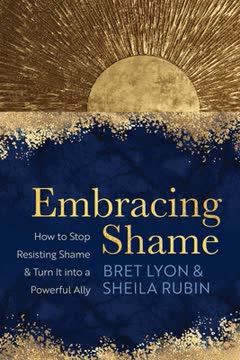Key Takeaways
1. Shame is a Hidden, Powerful Emotion that Freezes Life Force.
Shame is the opposite of life force, the opposite of what moves us forward, the opposite of what gives us energy and vitality.
Invisible yet pervasive. Shame is a complex, often hidden emotion that affects everyone, yet rarely gets discussed. It manifests as self-judgment, anxiety, confusion, or a persistent feeling that "something is wrong with me." This "magic emotion" operates through misdirection, turning our attention inward and making us self-conscious, much like a magician's sleight of hand.
A state of freeze. The core definition of shame is both a primary emotion and a state of freeze. It's an intensely painful feeling of being flawed and unworthy of love and belonging, often described as "the breaking of the interpersonal bridge." Physiologically, shame causes the body to contract, the chest to collapse, and breathing to become difficult, leading to a narrowed focus and impaired thinking.
Evolutionary purpose. While toxic shame is debilitating, shame itself has an evolutionary purpose: to help us navigate social rules and maintain connection. It keeps us "in line" and aware of boundaries. The challenge lies in transforming this inherent emotion from a destructive force into a useful, healthy ally that guides us without paralyzing us.
2. Toxic Shame Binds with Other Emotions, Preventing Completion.
When shame binds with an emotion, the magic of the human emotional system stops working.
Emotional entanglement. Shame is the "master emotion" because it binds with and interferes with other primary emotions like joy, anger, grief, and fear. This binding prevents these emotions from completing their natural cycle, leaving us stuck in a maze of unresolved feelings and diminished vitality.
Disrupted natural impulses. When shame freezes us, we lose access to the healthy action impulses associated with other emotions. For example:
- Joy/Pleasure: Shame interrupts enjoyment, leading to guilt or self-sabotage, and can drive addiction as people seek relief from numbness.
- Anger: Shame suppresses righteous anger, preventing us from setting boundaries or addressing injustice.
- Grief: Shame prolongs grief, making us feel responsible for losses or ashamed of mourning for "too long."
- Fear: Shame intensifies fear, creating a "fear-shame bind" that leads to immobility and heightened anxiety, often seen in performance anxiety.
Loss of curiosity. Shame also binds with curiosity, a distinctively human emotion. As shame increases, our gaze turns inward, our thinking becomes rigid, and we lose interest in exploring the world. Activating compassionate curiosity, however, can be an antidote, melting the shame freeze and expanding our perspective.
3. Unconscious Reactions to Shame Mask its True Nature.
Most of what we see in people when they feel shame is not the shame itself, but an unconscious way of reacting to the unbearable feeling of shame in their nervous system.
Shame's disguises. Shame is a master of disguise; its painful nature leads people to unconsciously react to it rather than feel it directly. These reactions offer temporary relief but prevent us from addressing the underlying shame. Recognizing these patterns is crucial for understanding ourselves and others.
Four main reactions: Donald Nathanson identified four primary reactions to shame, which we expand upon:
- Attack Self: Self-criticism, perfectionism, self-sabotage. "I'm terrible, I always mess up."
- Attack Other: Externalizing blame, criticism, contempt, or anger towards others. "It's all their fault."
- Deny: Disassociation, numbness, forgetting, or addiction to mask feelings. "Problem? What problem?"
- Withdraw: Physical or emotional retreat, isolation, leading to depression. "Absolutely nothing."
- Fawn/Cling: A special form of denial where one freezes internally, often to maintain connection with a perceived threat, abandoning personal needs.
Breaking the cycle. These reactions, while protective, keep us stuck. Understanding them as signposts for shame allows us to pierce through its disguises. By identifying our go-to reaction, we can begin to interrupt the automatic response and create space for conscious reassessment, moving towards healthier ways of coping.
4. Healthy Shame Transforms Limitations into Growth and Connection.
The destructive, life-stopping force we know as shame can be transformed into something healthy and useful.
A transformative concept. The idea of healthy shame challenges conventional wisdom that shame is purely destructive. It acknowledges that shame is an essential, inherent emotion that can be transformed into a positive force, guiding us to recognize our limits, learn from mistakes, and foster better relationships.
Qualities of healthy shame: Unlike toxic shame, which freezes the nervous system, healthy shame invites a pause for attention and reassessment. It cultivates:
- Self-compassion: Being kind to oneself, especially when facing flaws.
- Responsibility: Acknowledging one's part in a situation without taking all the blame.
- Humility: Accepting imperfections and limitations as part of being human.
- Big Picture: Seeing beyond immediate triggers to understand past, present, and future contexts.
- Precision: Clarifying blurry narratives and details distorted by shame.
- Humor: Lightening the situation, shifting energy, and gaining new perspectives.
- Vulnerability: Choosing to reveal oneself to trusted others, countering shame's secrecy.
- Discernment: Wisely choosing when, how, and to whom to be vulnerable, setting healthy boundaries.
A path to thriving. Healthy shame is a process of creating space, resourcing, and counter-shaming the inner critic. It helps us unravel shame binds, repair intrapersonal bridges, and accept our human fallibility. This multidimensional work allows us to move beyond unconscious cycles and embrace a fuller, more joyful existence.
5. Childhood Shaming Creates Lasting Inner Child Wounds.
Shame happens when your inner child is triggered.
Enduring impact. Our childhood experiences profoundly shape our adult lives. The "inner child" carries our desires, impulses, life force, and also our deepest wounds and disappointments. When this inner child is triggered by current events, it can lead to sudden sensitivity, confusion, or difficulty setting boundaries, often without conscious understanding.
Breaks in attunement. We are not born with shame, but with the capacity for it. Early "breaks in attunement"—when caregivers fail to respond to a child's needs—can be deeply shaming. The Still-Face Experiment demonstrates how infants quickly fall into a state of physiological and emotional freeze when a parent becomes unresponsive, interpreting disconnection as their own fault.
Toxic shame's origins. Lasting shame often stems from boundary violations, neglect, or the suppression of emotions like anger, grief, or fear during childhood. Children, dependent on adults, internalize the blame for these disconnections, leading to deep-seated beliefs of being "bad" or "wrong." This shame is often a child's "best possible solution to an impossible situation," offering a sense of control where there is none.
6. Heal the Inner Child Through Imaginal Resources and New Narratives.
What occurred to us in “real” life—everything that remains stuck in the cognitive realm—can be explored and changed in our imagination.
Imagination as a healing tool. Children naturally use imagination for play and coping, blurring lines between fantasy and reality. As adults, we often lose this connection, but the "imaginal realm" remains a powerful resource. It allows us to revisit and resolve past shaming situations, offering a fluid space where logic, time, and meaning can be reshaped.
Loving conversations. Healing involves fostering a loving relationship with our inner child, shielding it from the inner critic's shaming messages. Regularly "checking in" with this younger self, listening with kindness, and offering reassurance builds trust and allows suppressed desires and emotions to emerge.
Imaginal resources and new roles. In this realm, we can create abundant resources:
- Protectors: Imagining a superhero, dragon, or wise figure to shield the inner child from past hurts.
- Kind Inner Coach: A compassionate guide who offers encouragement and helps solve problems.
- Hero's Journey: Assuming the role of a hero on a meaningful quest, supported by guides.
- Role Repertoire Expansion: Challenging fixed self-images (e.g., "the good girl," "the outcast") by imagining new, empowering roles.
Giving back the shame. A powerful imaginal technique involves "giving back the shame" to its original source (introjects, not actual people). This process, done safely in the imagination, can release bottled-up anger and grief, leading to new insights about the shamer's own pain and freeing us to rewrite our life story with a more accurate, complex, and compassionate narrative.
7. Trauma is an Extreme Shame-Fear Bind that Traps Us in the Past.
Trauma is defined from the perspective of the individual.
Beyond the event. Trauma is not just a devastating event, but a person's overwhelming reaction to it, often involving powerlessness, substantial fear, and altered beliefs about self and the world. While shame is a primary emotion from repeated incidents, trauma is a nervous system overwhelm from extreme threats, often accompanied by an intense "freeze" response.
Polyvagal theory. Stephen Porges's Polyvagal Theory explains the physiological freeze response. When the sympathetic nervous system (fight/flight) is overwhelmed, the dorsal vagal system (a primitive part of the vagus nerve) triggers an emergency shutdown, causing immobility. This is a protective mechanism, but it can leave the body stuck, preventing the ventral vagal system (social engagement) from bringing us back online.
Brain's disruption. Traumatic events bypass the hippocampus, the brain's gatekeeper for memory processing. This means trauma doesn't get properly stored as a past event; instead, it remains in a "perpetual present," easily retriggered. This creates a "Shame-Trauma Bubble," where a part of us is stuck in that past moment, leading to repetition compulsions as we unconsciously try to resolve the unresolved.
8. Escape the Shame-Trauma Bubble by Reclaiming Your Story and Power.
We need to know on a neurological level that what happened is in the past; it’s no longer occurring.
It's not your fault. The first step to healing trauma is releasing the shame associated with it. Traumatic events are not the victim's fault; they are external disruptions or the actions of others projecting their own shame. Understanding this is vital for dismantling the belief that "something is wrong with me."
Share your story. Secrecy fuels shame and trauma. Compassionately sharing your story with a trusted, discerning listener is crucial for healing. This process helps integrate the traumatic event into your coherent narrative, allowing you to observe it from a safe distance, grounded in the present, rather than being overwhelmed by it.
Reclaim agency and expand tolerance. Healing involves:
- Acknowledging the end: Recognizing how the trauma ended, and any actions taken to survive or stop it, reclaims personal agency.
- Self-protective responses: Liberating blocked fight/flight responses, often through imaginal work, to empower the self.
- Window of Tolerance: Gradually expanding our capacity to experience difficult emotions without being overwhelmed, often with external support.
- New narrative: Replacing the "I am defective" story with a complex, accurate narrative that includes strengths, weaknesses, and the ability to thrive.
9. Embodiment and Pleasure are Essential Antidotes to Body Shame.
How can we feel vital and alive in our own skin when shame cuts off pleasure, cuts off experience, cuts off emotion?
Reconnecting with the body. Many people feel uncomfortable in their own skin due to societal and familial messages about appearance and capability. Shame cuts off pleasure and vitality, making it essential to gently reconnect with our bodies. This involves listening to internal conversations and challenging the perfectionism and criticism that often define our body image.
The emotional plague. Wilhelm Reich's concept of "armoring" describes how shame causes physical tension and restricted breathing, limiting our natural capacity for pleasure. This "emotional plague" is passed down, teaching us to suppress sensuality and replace pleasure-seeking with "dealing with reality," often leading to a diminished experience of life.
Cultivating self-kindness. Healing body shame involves:
- Challenging external mirrors: Recognizing that societal standards for appearance are often impossible and shaming.
- Creating a "soul mirror": Reflecting inner brilliance and worth, separate from external looks.
- "Parable of the Log": Learning to gently release and re-engage with coping mechanisms (like food or addiction) rather than abruptly abandoning them, fostering self-compassion.
- "Born to Yawn": Reclaiming natural bodily functions and expressions of pleasure, like a full, uninhibited yawn, as a way to release tension and embrace vitality.
10. Sexuality is a Core Vulnerability Point for Shame.
We are at our most vulnerable when we experience sexual feelings, and therefore, sexuality is where we’re most prone to feeling shame.
Vulnerability and judgment. Sexuality is a vital part of identity, yet it's highly susceptible to shame. From early childhood, we face moral judgments, boundary violations, and societal pressures that shape our sexual feelings and behaviors, often leading to a deep sense of shame around our desires and bodies.
Pleasure interrupted. Shame is fundamentally the "interruption of pleasure," and intense sexual pleasure is particularly vulnerable to this. Early shaming experiences—whether from a parent's disapproval of a child's natural curiosity or religious rigidity around sexual expression—can create lasting "pleasure-shame binds" that restrict our ability to fully experience and surrender to sexual joy.
Beyond stereotypes. Shame thrives on difference, making those with non-normative sexual identities or preferences particularly susceptible. However, even those who fit stereotypes experience body shame (e.g., concerns about penis size, breast size, weight). Healing requires recognizing that we are far more than our sexuality or perceived attractiveness, and challenging the socially engineered expectations that distort our relationship with our bodies and desires.
11. Healthy Relationships Require Understanding and Repairing Shame Triggers.
When two people relate to each other authentically and humanly, God is the electricity that surges between them.
Attachment and connection. Intimate relationships are the most intense and shame-prone adult connections, often rekindling childhood vulnerabilities. Our innate need for secure attachment, established in early childhood, dictates how we seek and give connection. When this need is unmet, we may struggle to securely attach as adults, either becoming overly demanding or withdrawing.
Tending and befriending. Beyond fight, flight, or freeze, humans possess an "affiliative nervous system" that drives us to "tend and befriend" in response to stress. This behavior, linked to oxytocin release, promotes connection, trust, and bonding. Understanding this innate drive helps us recognize the importance of nurturing relationships as a primal survival mechanism.
Navigating triggers and differences. Intimate partners inevitably trigger each other's childhood shame. Recognizing the "90/10 Split" (90% past, 10% present trigger) helps de-escalate conflicts. Common dynamics include:
- Pursuers vs. Withdrawers: Pursuers (seeking connection, often feeling abandoned) blame, while withdrawers (seeking autonomy, often feeling invaded) retreat.
- Language Styles: Understanding "love, power, facts, and vision" languages helps tailor communication to a partner's needs, avoiding shaming and fostering connection.
- The "Identity Conversation": Acknowledging the unspoken shame conversation—what a conflict says about "what kind of person I am"—is crucial for deep repair.
Conscious repair. Healthy relationships are not about avoiding ruptures, but about conscious repair. This involves compassion for unconscious shame reactions, speaking from "I" statements, and creating a safe space for vulnerability. By transforming shame, we can rebuild bridges, foster genuine intimacy, and choose relationships that nourish rather than diminish us.
Last updated:
Review Summary
Embracing Shame is highly praised for its comprehensive approach to understanding and healing shame. Readers appreciate the authors' expertise, compassionate tone, and practical exercises. The book is lauded for its accessibility to both professionals and laypeople, offering valuable insights into the nature of shame and its impact on relationships and self-worth. Many reviewers found the book transformative, helping them recognize and address their own shame. The authors' unique perspective on embracing shame as a potential ally rather than an enemy is frequently highlighted as a key strength.
Similar Books
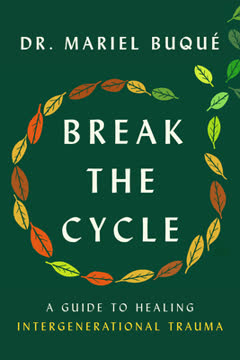
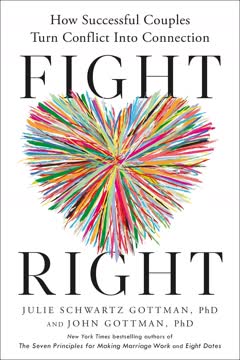


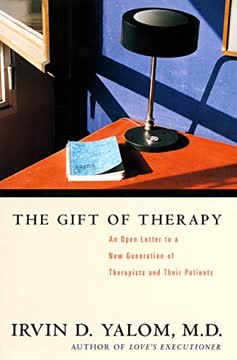
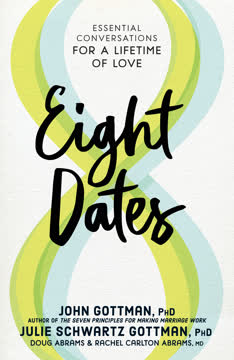
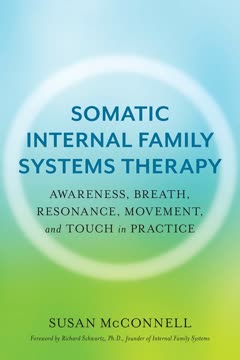
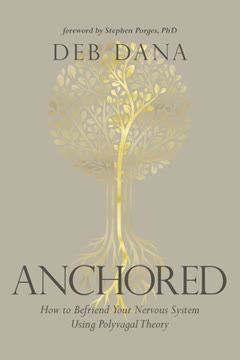

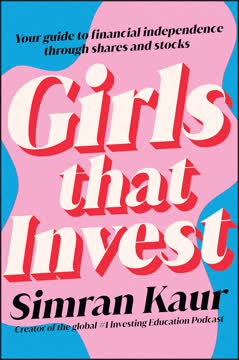
Download PDF
Download EPUB
.epub digital book format is ideal for reading ebooks on phones, tablets, and e-readers.
